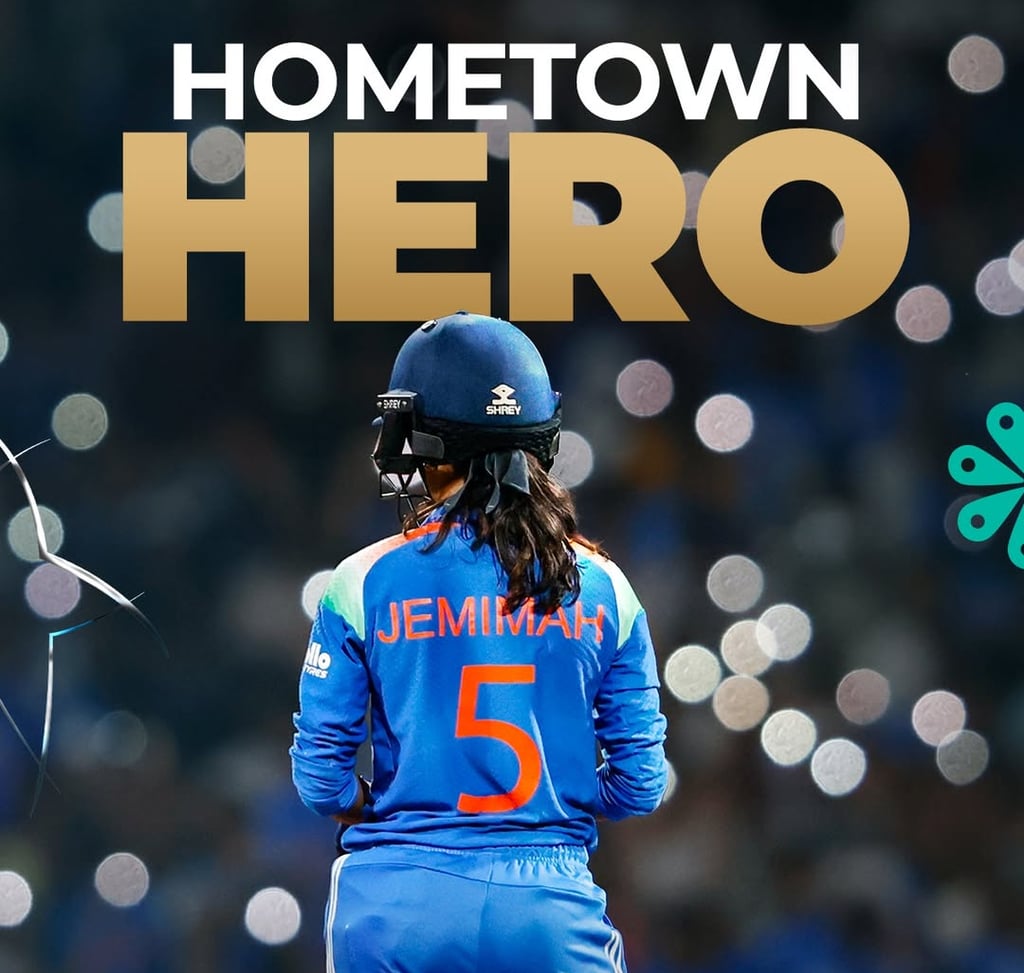A Night to Remember: India’s Semi-Final Triumph Against Australia
A Night to Remember: India’s Semi-Final Triumph Against Australia They said it was too steep a chase. They said Australia’s total was insurmountable. They said India would have to be near flawless — and when the final delivery was struck, India were. On a charged evening at Dr DY Patil Sports Academy in Navi Mumbai, India rewrote history, toppled the reigning champions and set their sights on the final.


A Night to Remember: India’s Semi-Final Triumph Against Australia
They said it was too steep a chase. They said Australia’s total was insurmountable. They said India would have to be near flawless — and when the final delivery was struck, India were. On a charged evening at Dr DY Patil Sports Academy in Navi Mumbai, India rewrote history, toppled the reigning champions and set their sights on the final.
Setting the stage: Why this match mattered
It wasn’t just a semi-final. For India, it was the promise of a new era. They had fought back in the group stage after stutters, had one eye on redemption against their long-time rivals Australia, who entered unbeaten, brimming with confidence. The crowd in blue, the home pitch, the high stakes — everything converged into one of the biggest nights in Indian women’s cricket.
Australia, for their part, had sent shockwaves through the tournament with blistering form: dominant batters, ruthless death overs, unflinching fielding. To beat them, India needed more than one hero — they needed a team performance, fearless intent and a belief that they belonged.
Australia’s Total: A Mountain to Climb
Winning the toss, Australia elected to bat and produced a colossal total — over 330 runs — built on class, depth and late surge. Their opening sets were elegant, their middle phase unflappable and their death-overs execution ruthless. India’s bowlers fought hard but couldn’t contain the momentum.
From the outset the challenge was clear: India were chasing against time and scoreboard pressure. But as any coach will tell you, chasing big is not only about runs but about momentum, belief and partnerships.
India’s Response: A Charge Built on Backbone
From the first ball of India’s innings, the message was clear: they would not be cowed. The openers set a tone of respect mixed with intent. Boundaries were found, singles were rotated, pressure was applied. More importantly, there was no collapse; there was belief.
Midway through the innings, India found their claws. The equation gradually shifted from “can they?” to “when will they?” Two batters stood tall. One anchored with calm precision; the other attacked with calculated fearlessness. Between them they laid the platform India needed.
In the final phase, when required run-rate climbed and wickets threatened, India held strong. The crowd roared, the fielders sprinted, and the mental toughness showed. When the winning boundary was struck — the stadium erupted. India had done it.
Key Moments & Turning Points
The power-play consolidation: While Australia crushed early overs and built their total, India’s openers kept wickets intact and scored at a rate that prevented the required-rate from going exponential.
The big partnership: At the heart of the chase was a stand of 140+ between two batters — the largest for India in a World Cup knockout. It bridged the gap between hope and inevitability.
The fielding revival and bowling fight-back: India’s bowlers struck back at key moments (mid-innings) to stem flow, while fielders produced moments of brilliance to dent Australia’s momentum.
The death-overs neutralisation: Australia’s strength lay in death batting. India’s bowlers and fielders executed when it mattered, keeping the final overs within reach rather than letting the target balloon further.
The crowd, emotion & home advantage: The energy of a home semi-final cannot be underestimated. When the Indian batters looked up and saw 30,000+ voices in blue behind them, the shift was tangible.
Stand-out performers
Captain Harmanpreet Kaur: Led from the front with a composed yet powerful innings under pressure. Her shot-selection, timing and calm in key moments anchored India’s charge.
Jemimah Rodrigues: The aggressor. Her century—and more importantly, the way she accelerated when it mattered—turned the chase from plausible to probable.
The bowling unit: While they were set a daunting target, several bowlers produced overs that prevented Australia from totally dominating the third quarter of the innings.
The fielders: Two or three game-changing stops and diving efforts lifted India’s energy and morale, and denied Australia the momentum that their batting had built.
The Aftermath: What This Victory Means
For India, this is more than a semi-final win. It signals belief, evolution and arrival. Beating Australia in a knockout of this magnitude changes narratives: from “will they?” to “can they repeat?” From “good team” to “champions in waiting”.
For the broader women’s game in India it’s a turning point. The audience, the media attention, the infrastructure — all converge to open the next chapter. Young girls watching will now believe that this is possible.
For their opponents and for the sport globally, India’s win reaffirms that depth, momentum and execution matter. It’s no longer enough to rely purely on tradition; you must deliver on the day. India’s balance of bat and ball, home advantage and mental resilience converged.
What Comes Next: The Final & Beyond
With this win, India advance to the final of the Women’s World Cup 2025. The pressure now shifts to the ultimate prize — one last hurdle. But if this semi-final taught us anything, it’s that India are ready to embrace pressure rather than shrink from it.
The road ahead will demand even sharper execution: handling expectation as favourites, managing nerves in the final, and ensuring that the finishing touches are applied. Australia’s knock-out exit will be studied by others too — India must realise that every team will now raise their bar when facing them.
Closing Reflections
On a night of cricket that will long be remembered, India forged a victory not just with strokes and wickets, but with spirit and surge. They turned a mountain into a mission, and a mission into memory.
When the final ball was struck, it wasn’t just a win — it was a statement. The hosts, in bule, had done more than survive — they had triumphed. And the world of women’s cricket stood up and took notice.
